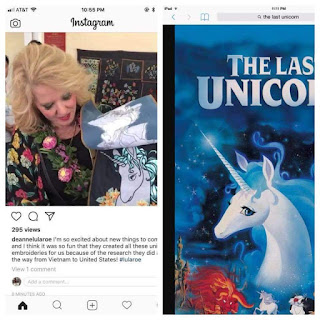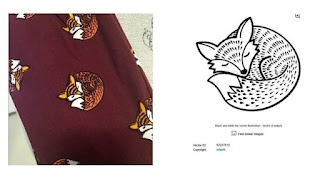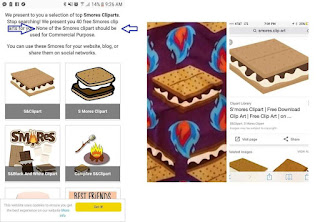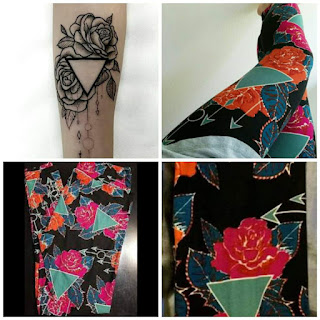The Rise and Fall of LuLaRoe
I'm in too much pain tonight to sleep, so I think it might be time for some more LuLaRoe documentaries, because I think LuLaRich didn't delve deeply enough. For example, I am hearing from someone in my DMs that LLR would sometimes terminate retailers if they sold other MLM merchandise from other suppliers? That seems an important counterpoint to all that talk about empowering women to start their own businesses!
This documentary we're about to watch isn't free with Prime, but it IS free with a 7-day trial of Discovery+ so there may be a few more documentary live-tweets from me in the coming 7 days. It's called THE RISE AND FALL OF LULAROE, which is a very nicely dramatic title.
We start with one of DeAnne's pep-talks about how great the retailers are for being entrepreneurs with their own businesses, and again I have to stress that they *terminate* retailers if they sell, say, makeup from another MLM company. That is not a normal retailer-supplier relationship. We have a lot of opening testimonials (quick shots) from former retailers who felt scammed and lost money. I do appreciate seeing more retailers from the "bottom 80%". LuLaRich seemed to focus on the top 20%.
Those Washington deposition tapes are just a wealth of DeAnne saying "I don't know" over and over to stonewall basic questions. I do enjoy that we get to see quite a few of the leggings and the early designs. They're bold, yes, but I do think they're cute. (Shame about the rampant copyright infringement!)
*presses finger to ear* Okay, I am hearing from someone else in my DMs that the "terminates retailers for selling from other MLMs" clause depended on whether the merchandise was deemed to be in 'competition' with the LLR merchandise? But, again, this is not normal demands from a supplier?
To return to my usual hypothetical examples, Hanes does not tell Wal-Mart that WM can't carry any Fruit of the Loom in their stores or Hanes will terminate the relationship. Or, well, they COULD tell Wal-Mart that but WM would tell them to hit the road. The fact that LLR could demand that their retailers "exclusively" sell their goods and no other "competing" merchandise indicates the extreme power imbalance here between the retailer and the supplier.
An expert walks us through the pyramid process, though they don't include the detail from LuLaRich that after 13 levels you run out of human peoples on earth. Another expert explains that the internet really expanded the concept of the Tupperware Party. You're no longer limited to neighbors for people to sell/recruit to; you can throw virtual "parties" on Facebook Live and so forth that can reach around the globe.
Amanda Montell (author of the book Cultish, which several of you have recommended) demonstrates the pitch of the "side hustle" in an extremely effective manner. I love her gregariousness. One retailer calls LLR an example of "the American work ethos on steroids" because, again, so many of these women were perfectly willing to work and hustle! This wasn't, like, the Monkey Jpegs where they just expect to buy a thing and sit back while it accrues value.
Montell talks about the overlap of MLM and Mormon (and, I would add, various christian cults) because they're raised to evangelize and witness, and that skill comes into play with sales/recruiting for MLMs. Another expert drops that DeAnne's family is basically descended "Mormon royalty", which I did not know. That certainly was not mentioned and did not come across in the LuLaRich documentary.
One of the interviewees actually grew up adjacent to DeAnne in her Mormon community and church, so that's an interesting perspective to be exposed to. There is talk about how enthusiastic and high-energy and visible (insta, social media) DeAnne likes to be. They discuss DeAnne's "origin story" selling maxi skirts out of the trunk of her car. Montell talks about how they frame the story such that the pyramid-style recruitment wasn't even DeAnne's idea, it just "fell upon her" as part of the "American dream". Innocent!
I must say, I am REALLY liking the interviewees here in this "Rise and Fall" documentary. I mean, I liked the interviewees in LuLaRich too, but these are adding a lot of sharp, interesting new points. I really appreciate that we're seeing more from the lower-pyramid victims. A lot of these women look like normal people I know and my heart goes out to them. They talk about relating to DeAnne's origin story.
"I feel like LuLaRoe's message was 'Every body is beautiful. Our size ranges went up to an 18-20, so I felt like it was really size-inclusive." *winces* Okay. Not everyone is deep into fat activism. But, uh. Yeah. For those not in the know or not familiar with American sizing, size 18-20 or 1x is the low end of "plus size". I have rarely seen stores go past 34-36 or 5x, but we need inclusive sizing that goes up even higher than that.
DeAnne tells people to go out and "find five people a day" and build a relationship with them to recruit them. The introvert in me is shrieking. As mentioned in LuLaRich, "trainers" with a certain number of underlings get a gold watch as a status reward. People were supposed to write down "50 names" of people you could recruit. I would not be able to do that! And they draw the point that in a Mormon community, it's much easier to make that list. DeAnne was drawing off that existing infrastructure.
Mark repeats that they're offering "full time pay for part time work". Vivian Kaye, a business advisor and actual entrepreneur, explains how much that is NOT the reality for most/all small businesses. Money doesn't magically just fall into your lap like that.
Even the "top 20%" at LLR who were making huge amounts of money were still hustling constantly to recruit, recruit, recruit, and were spending everything they made into direct marketing--travel, trips, ostentatious displays of wealth. So literally NO ONE was getting full time pay for part time work; even the early adopters who were making 6-figure bonus checks were hustling so much that they had to hire nannies, cooks, etc just to feed their families.
Vivian Kaye talks about how mothers are pressured to stay home in an economy where daycare costs more than most jobs bring in. But women long for fulfillment and community and stimulation, so the whole "boss babe" appeal is very strong.
Another retailer is talking about- they had 4 kids and adopted 7 more. Uh. Oh. Um. *hesitates* Look, she seems really nice but there are a LOT of issues with the adoption industry and foreign adoption, which is what they opted for ON A MISSION TRIP. *wince* That's... we're just going to move past that and talk about the LLR cruise.
DeAnne urges them to qualify for the cruise prize, with higher sellers/recruiters getting better rooms. To qualify for the cruise, a retailer has to sell $12,000+ merchandise per month for six months. Mark (and others) have repeatedly said they don't track sales to customers, so I'm not really sure how they verify those sales. Perhaps the tracking changed over time? The documentary notes that the basic startup kit for joining LLR has gone from the initial $5,000 cost to $499 now.
The cruises and parties, which are heavily shown on instagram and facebook, are designed to be aspirational and play on people's fear of missing out: they don't want to be left out of the community. Montell talks about how the MLM events are run like revival meetings: high energy, high community, a sort of group ritual that boosts your serotonins. "These are bonding events."
Vivian talks about how the person "on top" is talking down to the flock and demanding their tithe of time and evangelism: the followers were supposed to bring in more money and more people. An events team planner talks about LLR's mission statement and how everything was all about positivity, joy, a wonderland, and (most importantly) "this could be you" if you bought in. They were selling a life style, an aspiration.
...I love this man and his attitude. Bless him. They hired him to wear leggings and dance for the crowd. "The whole atmosphere was overwhelming joy and excitement. A wholesome party! No alcohol! I don't need anything to help me party!" Again, much like a revival meeting, people were asked to get up on stage and give a sob story--a "why"--for why they wanted to be a part of LLR.
Now we have a nice widow with white hair and purple edges who is living in and running a shop out of a formerly-LuLaRoe-branded Airstream trailer. I really do love how many more retailers we get with this documentary. LuLaRich had, I think, 5 that appeared regularly through the four episodes and it was nice to get their deep-dive throughout, but this is giving more breadth to add to their depth.
She talks about how LLR insisted that everyone hashtag "because of LuLaRoe" for every good instagram post. And bad instagram posts? You weren't supposed to even have those anymore. Delete those posts, and delete negative comments. A retailer talks about how she was reprimanded for "being negative" because she was trying to address customer concerns rather than just delete-and-block (and burn a customer connection!). That is stunning.
Purple Tips talks about how the "surprise" nature of the boxes was addicting, "like playing a scratch off lottery ticket". Unboxing would typically be done live on a facebook stream, with customers sharing in the enjoyment of discovery and scrambling to bid. "Once you start getting good boxes, you go 'oh, I'm gonna order another one because I sold half my box'." Remember from LuLaRich that retailers really shouldn't be ordering new stock until they've sold at least 70% of their old stock.
These purchases are almost impulse buys, not careful spending based on customer data! But just because you sold 10 shirts today doesn't mean tomorrow will be the same! If anything it's LESS likely, because your customers have fewer shirt needs now, thanks to today. God, I really am reminded of someone's story of a small comic shop that stocked based on vibes and predictions of which playing cards would go viral / rare / popular. That's not wise business planning! A reputable supplier, especially one with all the "mentors" that LLR claims to have, would be teaching these "new business owners" not to order stock based on vibes.
Like. Okay, hang on, this is important to me. I have an Etsy shop, right? That shop lets me sell my paperback books at a higher royalty than I get from Amazon, yay. So I have in stock:
- Pulchritude
- Poison Kiss
- Survival Rout
- No Man of Woman Born
- Cinder The Fireplace Boy
Just like an LLR retailer, I have to make decisions about how much stock to carry and how to store it. There's no point to buying 1,000 copies of a book that I sell 5 copies of every month, right? I'd have to store all those extras and the money would be sunk/gone. Nor would it make sense for me to just decide to keep it simple and keep 20 copies of everything on hand, because they don't sell at the same rate!
Pulchritude is my earliest book and is a raw little gut-punch of a book about domestic violence and living with an abusive husband. It doesn't have a happy ending and I'm upfront about that! I love it dearly but it doesn't fly off the shelves and that's okay.
Poison Kiss and Survival Rout are part of a series that I'm still working on. Because most people like to start with Book #1 and not just jump into Book #2, that means I don't sell as many copies of Survival Rout as I do Poison Kiss. (The first book in a series generally sells better than the second, third, etc because people buy and then the book languishes on the To-Read pile that so many of us have in this wonderful time of SO MUCH TO READ, NO TIME TO READ IN.)
No Man of Woman Born sells like gangbusters because a lot of people seem to like it and it's additionally on a lot of "what to read instead of Terfamort" lists that go around whenever the Terf Queen acts up. I used to see regular sales boosts whenever she went viral. And Cinder The Fireplace Boy is selling very well too (thank you!) in part because it's the newest of the group and you are all wonderfully supportive + a lot of you have kids who like fairy tales.
What I have to do is track sales data over time and use that to determine what to keep in stock! I usually keep about 3 copies of Pulchritude, 4 of Poison Kiss, 3 of Survival Rout, 20 of No Man, and 30 of Cinder. It takes ~2 weeks to get more from my printer. So those numbers are based on the maximum of what I think will sell every 2 weeks, i.e., the length of time to get more stock in.
Now sometimes--like when Cinder first released--I'll go viral and there will be a run on the store and I'll sell 30 overnight. (YAY!) Then I'll need to order 30 more right away. But what I don't do is think "oh! I'll order 60, since these are selling so well!" I don't do that because virality is a fickle mistress and usually doesn't last more than a day or two. Now, if I was selling out EVERY two weeks, for a month or two, I would seriously consider adjusting my stock numbers upwards.
To bring this back to LLR, it seems like a lot of these sellers didn't have that knowledge (and it's something I really only learned over time and with some retail training in my younger days) and a lot were just... ordering based on vibes. Note that this does not mean that these women were foolish or not smart!! A lot of this business stuff isn't something you're born knowing or just intuitively understand without training! People get *degrees* in this stuff!
Purple Tips underscores this point: if you sold half your box and turn around and buy another box, you haven't actually turned a profit in cash. (You have a "profit" tied up in inventory, but can you get money back out of it? Only if you sell or return in.) Vivian Kaye talks about how LLR created a sort of "collector hysteria" around the leggings, with people buying hundreds of leggings, more than they could wear in a lifetime. DeAnne tours the factory line, telling people to buy-buy-buy all these new limited prints.
We get to hear about how the Stidhams (Mark and DeAnne) flaunted their wealth with a huge house, luxury cars that broke a land speed record, and expensive accessories. The goal was to show that you too could become like them. An expert explains that the choice to hire all their adult children as executives meant that the business leaders would always be "loyal" to the family. (Which is not the best thing for the business!)
Ooh! One of the interviewees talks about prosperity gospel, which I previously mentioned in another thread. She explains that this view of God is that if you are good and favored, wealth WILL follow. Again: wealth is guaranteed to the retailer IF they just work hard. Mark: "You want to know if you're good to your fellow man? Check your bank account." My god. I really hate the prosperity gospel heresy, and the interviewee subject talks about how intertwined it is with the modern "American dream".
Purple Tips (I just cannot catch names with this documentary, they go by way too fast!) talks about how the trainings convinced her to buy way too much inventory. "If you buy more, you'll sell more, because people will come to you." Since a lot of the selling was done online, there was a lot of magical thinking about an audience that was just waiting to come to you. Without the internet, you would have been limited to in-person sales and would've had a more realistic idea of your prospects. By which I mean: You can't sell 5,000 leggings in a town of 1,000 people. But you think you can sell 5,000 leggings to an internet full of infinite people. And you were told to buy more stock because that meant the odds of getting good/rare leggings.
I find this "unicorn" talk very interesting. LuLaRich mentioned "unicorn hunting"--when you're looking for a specific print that you want--but made it sound like a cultural term that just reflected personal preferences. But here in "Rise and Fall", it's more insidious and makes the stock boxes seem more like "loot crates". The retailers are actively hoping for "unicorns" in their stock that are in high demand.
This is fascinating to me because, remember!, these leggings aren't being auctioned! They sell for a flat rate of $25. So a "unicorn" piece isn't worth more than a dud, except in the sense that it's a guaranteed sale that won't sit on your shelves for weeks. BUT. LLR is playing up the "unicorn hunt" by telling people that having rare prints will drive customers to YOUR shop. But will it *retain* them? If I'm looking for something and find it on Newegg instead of Amazon, that doesn't mean I'll go to Newegg first next time.
It's like... they're using the new idea of the internet to promise retailers infinite customers, but using the old idea of brick-and-mortar stores to tell retailers to expect customer loyalty. If I'm an LLR buyer, then I'm just going to shop-hop to gather what I want. I'm not going to become "loyal" to one seller over another just because one time they had those Jack Skellington leggings I wanted. That's not how online shopping works.
In a recorded video, DeAnne tells them to "order every day" and "do not wait for things to be restocked". That is absolutely terrible advice and again feels like these stock boxes were designed to trigger gambling addictions--which I did not expect or see coming! I used to order inventory for a big box store and there is no reason to be ordering from the same supplier EVERY DAY. "Every dollar that we made, they would tell us to reinvest in more clothes." / "The more you buy, the more you sell." I am stunned by how blatant this is. Like, if I can just go on a side-rant about ethics here, it is maddening to me that none of the retailers are being encouraged to set aside a tithe of their income into savings for the business in case of a rainy day, pop-up expenses, and so on.
A designer (not the same as LuLaRich) talks about how they had 3 designers with a quota of 1,000 new patterns every day. Some of the prints are really cute! Those are the ones that make it into commercials. If this had been a sensible legitimate company (who owned their own IP and didn't steal images!) they could have tracked popularity and put out reprints. Reprints wouldn't even mess with the "FOMO" (fear of missing out) mentality because limited runs of reprints always snap up. But I don't even know how LLR would track popularity--they seemed to send returns right back out to other retailers rather than inventory them.
Without some kind of tracking to show that GREEN CLOVER sold out 0/3000 but that MARK STIDHAM FACE* was coming back and languishing in the warehouse at a stock of 2400/3000, how would they even know what to reprint?? (* Yes, they made leggings with Mark's face on it.)
I do wish I knew more about the refund policies that LLR had over time! Because if I were doing these facebook lives, I'd give a piece two (2) showings TOPS and then send it back for a refund. Some of these retailers talk about pieces they couldn't move for MONTHS. Given how shady everything else has been, I *assume* that refunds were heavily discouraged and that you were scolded for being "negative" or not trying hard enough, and we do know that the customer service dept was overworked. So I imagine that's why. But still.
This is, again, a way in which LLR is failing in their stated goal of training and empowering girl bosses. Big retailers do NOT keep ugly, unwanted merch on their shelves for 6+ months on end in the hopes that someday their prince will come. A warehouse worker talks about the moldy leggings issue and how "thousands" of leggings were left in the parking lot as overflow storage overnight.
Oh! Meg Conley is going to talk about the people who make the clothes! Thank you, Meg! I have been wondering about this since the beginning! DeAnne touring the factory: "We don't judge anyone. We just accept how they do things in their country." I can only assume she's preemptively fielding accusations of this being an underpaid sweatshop. She points out there is air conditioning. ...that seems to be all we're going to get on the workers. I wish Meg had been allowed to go on more about that. We're moving on to the manufacturing issues stage wherein the leggings developed holes.
MommyGyver talks about how new recruits were being urged to max out credit cards, borrow from children's college funds, and other risky methods in order to afford that initial $5,000 buy-in. A retailer talks about how she was pressured by LLR to pour all the money she made right back into inventory. This is maddening! They're being told to buy inventory with no thought for whether the *demand* will stay steady (especially as *supply* radically increases)! Even if demand would remain steady (despite the supply glut) it's unreasonable to tell business owners to pour ALL their profits back into the business. You're supposed to take a wage for yourself! You're supposed to set aside a savings buffer!
This entire business model of never keeping any money--of pouring it all into inventory and direct marketing (i.e., Louis Vuitton bags and markers of success)--is just so dangerous. One bad month and your electricity is cut off! "I really had enough inventory, but I bought more things. That's what gets you more in trouble." She has $25,000 worth of inventory in her garage and no way to recoup that money because no one wants to pay for those clothes. Another retailer had inventory that wouldn't move so she had to take out a loan to buy MORE inventory that would sell. So I guess this is one of the "no refunds" phases of the company's lifespan.
Ah! Vivian Kaye is a "business coach" in addition to being an "entrepreneur" (per the card title) and it shows: she's explaining that LLR was utterly devoid of safety nets, because "you aren't a business. You are a 'retailer' for another company."
*buries face in hands* LLR wasn't teaching them to set any money aside for end of year taxes. So now retailers are having to declare bankruptcy because you can't pay the IRS with leggings. I'm just so angry and sick watching this as someone with a tiny business of my own. This is stuff that... it's not HARD, but it's not INTUITIVE. People need to be taught this. LLR was making them attend mandatory 2-day training events and giving daily advice videos and they didn't hire a goddamn accountant to teach their retailers how not to end up owing everything to the IRS. That is so many levels of unethical and bad business. It IS bad business to let your retailers go under into crushing debt!
Montell talks about how the community would drop people the moment they expressed a desire to leave, and how damaging that is within cults and cult-like atmospheres. She explains that MLMs aren't like your average scams and work based on cult tactics. They use gaslighting tactics and community pressure and psychological tactics. Ultimately, the methods of manipulation between MLMs and cults are the same. They were even told to wear the same clothes, look the same, act the same. "Looking out into the audience... Everybody was twins."
Vivian Kaye says they're most likely targeting middle-aged white women in middle America, while using a lot of Black vernacular to appear diverse and relevant. "They're using the Black vernacular to profit...but we're only there for seasoning." The retailers being 95% white did not come across as clearly in LuLaRich, partly because 3 of the 6 interviewees were Black and brown women.
Oh, this was NOT made clear in either of the documentaries at all. There is a big difference between a "100% return policy" and a return policy that you can only take advantage of if you leave the company entirely.
@DefectiveBecca. Oh no, you could not return anything unless you went out of business. Even bigger issue, you could not discount anything by even $1 unless you quit. Your only choices were sell at the very overpriced full price or give it away for free.
*primal screaming* People were burning their onboarding packages ceremonially when they left LLR, and in doing so were accidentally destroying important evidence of the company's false claims. So they had to be told not to do that. As part of the Washington state case, LLR had to pay $4 million back to Washington resident retailers.
That's quite a string, especially if a refund option hadn't been available prior to that!
@DefectiveBecca. Yeah and once they got rid of the 100% buyback and went to 90%, one of the strings attached was that it could only be product purchased in the past year.
Meg Conley explains that pyramid schemes are actually built for people to fail, that failure is an integral part of the system, because that's where the money comes in. (If people had taken their profits and stopped buying new stock, LLR wouldn't have that money.) Vivian Kaye points out that the system is built to funnel money up to the top. "Capitalism is the root of all evil." LOVE HER.
I really enjoyed that documentary. I do think it was worth watching, especially for Conley and Montell. I feel like in some ways it did better than LuLaRich in terms of showing the damage, but I felt LuLaRich laid a better foundation of timeline and events. One of the ex-retailers is already in another (better?) MLM company. Another admits to ambivalent feelings about MLMs but she buys from them. Purple Tips advises staying far away from MLMs as both seller and consumer.
Final slides say that LLR's 2020 income disclosure statements listed average retailer gross yearly profit as $10,000 and median gross profit as $1,444. "Retailers must cover their startup costs, including racks and hangars, ongoing costs like shipping and packaging, or professional services like a bookkeeper or attorney." The American dream: an 80-hour a week job that pays an average of $10,000 a year. When I think of how many hours those women worked, just to work themselves into bankruptcy... it's really tragic.
I think that's all for LLR, at least on this timeline. Big big big thank you to @DefectiveBecca for all her information that she's given to us during this live-watch!
Shut Up!





















